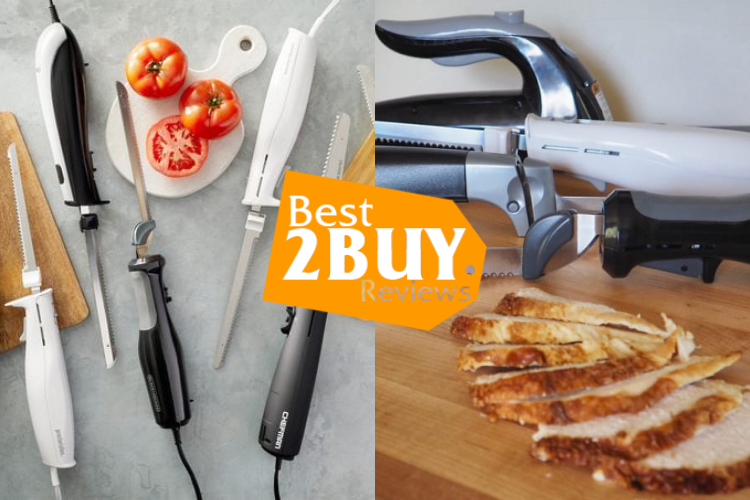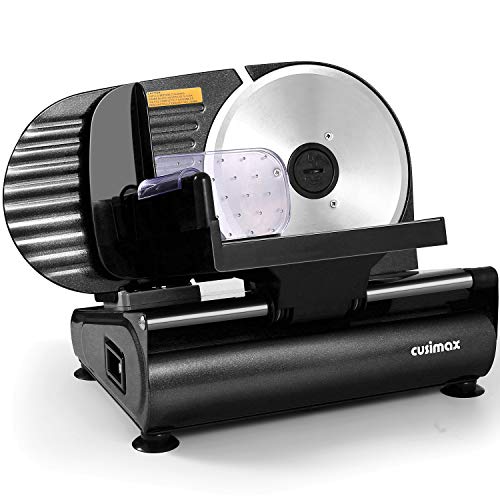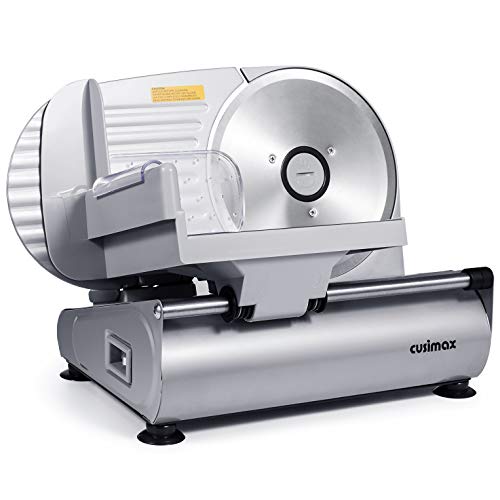How to Choose the Electric Knives & Slicers
Electric Knives: A Comprehensive Guide To Choosing The Right One

- 1. Electric Knives: A Comprehensive Guide To Choosing The Right One
- 1.1. The Structure of an Electric Knife
- 1.2. Advantages of Electric Knives
- 1.3. Best Uses for Electric Knives
- 1.4. Choosing the Right Electric Knife
- 1.4.1. Blade Type and Material
- 1.4.2. Blade Length and Flexibility
- 1.4.3. Power and Speed
- 1.4.4. Comfort and Ergonomics
- 1.4.5. Safety Features
- 1.4.6. Corded vs. Cordless
- 1.4.7. Ease of Cleaning and Maintenance
- 1.4.8. Accessories
- 1.4.9. Brand Reputation and Reviews
- 1.4.10. Budget and Warranty
- 1.5. Maintenance and Care
- 1.6. Safety Precautions
- 1.7. Conclusion
Electric knives are versatile kitchen tools designed to make slicing and carving tasks easier and more efficient. They consist of a motorized handle with serrated blades that move rapidly to cut through various types of food. While they might not be as commonly found in every kitchen as traditional knives, they offer unique advantages that make them a valuable addition to culinary routines.
The Structure of an Electric Knife
An electric knife usually comprises these main parts:
- Handle: This section encases the motor and power supply, typically a cord or rechargeable battery. The handle commonly features a trigger or power button to activate the blades.
- Blades: Electric knives are equipped with two detachable serrated blades, designed for convenient cleaning. These blades oscillate rapidly to effortlessly slice through food.
Advantages of Electric Knives
- Efficiency: One of the primary benefits of electric knives is their ability to make cutting through food significantly easier and faster than using traditional knives. They are particularly useful when dealing with large roasts, hams, or bread loaves.
- Precision: The rapid movement of the blades results in more uniform slices, allowing for precise cuts with minimal effort. This is especially handy when presentation matters, such as when slicing meat for a dinner party or cutting a cake.
- Reduced Effort: Electric knives are particularly useful for individuals with limited hand strength or mobility issues, as they require less pressure and manual dexterity to operate.
- Versatility: They can be used for various food items, such as meats, bread, fruits, and vegetables, making them a versatile tool in the kitchen.
Best Uses for Electric Knives
- Carving Roasts: Electric knives excel at carving meats like turkey, chicken, or beef, providing clean and even slices.
- Slicing Bread: Cutting through crusty bread or delicate cakes is made simpler with an electric knife, as it maintains the structure and shape of the loaf or cake.
- Prepping Fruits and Vegetables: Electric knives can swiftly cut through a variety of fruits and vegetables, making food preparation faster and more efficient.
- Fillet Fish: They are useful for delicately filleting fish due to their precision and control.
Choosing the Right Electric Knife
Choosing the perfect electric knife requires careful consideration of several factors to ensure it meets your specific needs and preferences.
Blade Type and Material
Electric knives come with different blade types, each suitable for various tasks. Some models have interchangeable blades, allowing for versatility in cutting styles, while others have a fixed blade. Consider the material of the blade as well. Stainless steel blades are common, as they are durable, rust-resistant, and hold their edge well. Titanium-coated blades offer additional durability and resistance to corrosion.
Blade Length and Flexibility
The length and flexibility of the blade significantly impact its functionality. Longer blades are ideal for larger cuts, such as slicing roasts or bread, while shorter blades offer more control for intricate work like filleting fish. A blade with some flexibility is advantageous for tasks that require maneuvering around bones or contours of food.
Power and Speed
The power of the motor determines the knife's cutting capability. Higher wattage usually means greater cutting strength and efficiency. Opt for a knife with variable speed settings, as it offers more control, allowing you to adjust the speed according to the type of food being sliced.
Comfort and Ergonomics
Comfort is crucial, especially if you’re going to use the electric knife for extended periods. Look for a model with an ergonomic handle that fits well in your hand, reducing strain and fatigue. A well-balanced knife minimizes wrist discomfort and ensures precise cuts.
Safety Features
Safety features are paramount. Consider knives with safety locks to prevent accidental start-ups, blade guards for safe storage, and trigger locks that require both hands to activate the knife. These features mitigate the risk of accidents and injuries.
Corded vs. Cordless
Corded electric knives provide continuous power but may limit mobility. On the other hand, cordless knives offer more freedom of movement but might have limited battery life. Consider your usage preferences and the convenience of each option.
Ease of Cleaning and Maintenance
A knife that's easy to clean and maintain will ensure longevity. Look for models with detachable blades for convenient cleaning and consider if they are dishwasher-safe. Additionally, some models come with storage cases, which help to protect the knife and its components.
Accessories
Although you probably won't require a dedicated carving fork for your electric knife, having a storage case can be advantageous. The bulky nature of handles and cords, whether attached or for charging, makes storing electric knives alongside regular ones challenging. Moreover, if the knife isn't used often, keeping it in a case can make it easier to locate and less susceptible to damage.
Brand Reputation and Reviews
Researching the brand's reputation and reading reviews from other users can provide valuable insights. Consider well-established brands known for quality and reliability, and take note of user experiences to understand potential issues or standout features.
Budget and Warranty
Set a budget and explore options within that range. Keep in mind that higher-priced models may offer more features or better build quality. Also, check for warranties that cover manufacturing defects or malfunctions.
Maintenance and Care
To maintain the performance and longevity of an electric knife:
- Always detach the blades and clean them thoroughly after each use.
- Follow the manufacturer's instructions for proper care and storage.
- Avoid immersing the motorized handle in water; instead, wipe it with a damp cloth.
Safety Precautions
- Always disconnect the knife from the power source before detaching or changing the blades.
- Keep fingers and hands away from the blades, even when the knife is not in use.
- Store the knife safely, out of reach of children.
Conclusion
Electric knives, offering convenience and efficiency, prove to be invaluable assets in the kitchen for a range of cutting and slicing tasks. Their significant advantages are particularly evident for individuals with physical limitations and culinary aficionados aiming for precise and consistent food preparation. With a thoughtful selection and careful usage, electric knives can transform into essential tools in the kitchen, streamlining chores and elevating the culinary journey.










